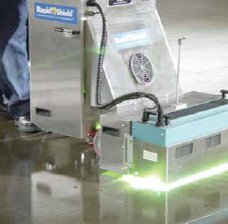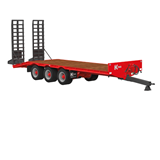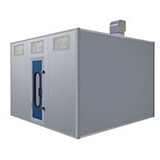When it comes to floor coatings, the mistakes can be myriad and often sit between a very fine line of success and failure.
Robin Aurisch, technical manager for Nuplex Construction Products, said common mistakes are over specifying or under specifying protective coatings.
"Or they’ll specify something that’s too thick or expensive when really they want a roll coating," he said.
"When they are applying them, the three most common mistakes are poor preparation of the concrete, putting too much or too little non-slip in there, and not listening to the needs of the customer on how they’re going to clean the floor."
Aurisch said specifiers can also go wrong by not working with manufacturers closely enough. For example, they may think reading technical sheets from a company’s website is adequate without fully understanding the product.
"So they end up with something that is too thin or too thick and it has no falls in it to provide cleaning," he said.
"Everyone prices on what’s come up in the spec and no one is prepared to change it. Often the manufacturer is the last person to know. They only find out when there’s a problem with the floor."
Choosing the right floor coating will depend on several factors, such as the type of flooring to be coated, the client’s needs and whether the flooring is in a high or low traffic area.
To avoid problems, Aurisch advises specifiers to work more closely with manufacturers at the beginning of a project – manufacturers can help advise which types of floor coatings are most appropriate.
Forming relationships with manufacturers and suppliers, such as through networking lunches for architects, also makes it easier for specifiers to call companies for advice.
"One telephone call could save a myriad of problems," he said.
The growth in popularity of environmental standards and water-based floor coatings has also added to the confusion. Aurisch said he has witnessed a move towards low VOC coatings, particularly in Queensland where the Queensland government has tested and approved coatings for use on its projects.
"Water-based coatings are mainly restricted to the roll-on type coatings. Where we weren’t really making them 10 years ago, there’s a lot more manufacturers offering that type of technology now," he said.
However, he said: "there will always be room for solvent-borne coatings".
Specifying flooring coatings doesn’t need to be difficult. Aurisch advises there are some simple steps people can follow to ensure success; understand the needs of the customer – how will the flooring be used, by whom, and how will it be cleaned?
Make sure the correct coating is chosen for the wear and tear the floor will undertake. Everything falls on the floor and all the wear is taken by the floor. The slip risk on a floor is also an important factor.
"Understanding the client’s needs is the most important one," Aurisch said.
"When it comes to flooring, there are so many options and so many different textures. You should be considering drainage and how they’re going to clean the floor."
Once the floor coatings have been applied, there is another vital step which needs to be addressed – educating the client on how the floor needs to be cleaned.
"More often than not there is no consultation because the specifier will just call up a generic type of system without giving a company’s name [to the client], so then people don’t know where to turn to for help," Aurisch said.


-160x160-state_article-rel-cat.png)



-160x160-state_article-rel-cat.png)

















